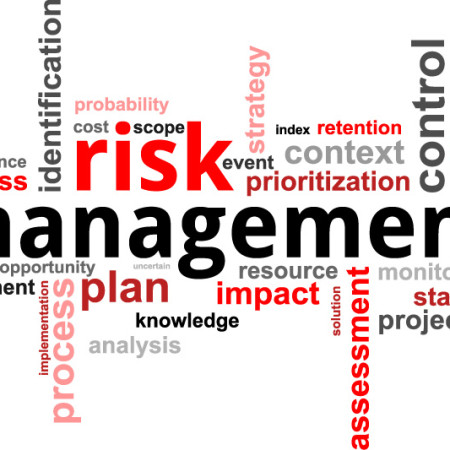Most business owners that want to grow their companies focus on sales growth. But that’s only half of the solution.
You also need to make sure that the customers that buy get around to paying you. Managing accounts receivables is what really makes or breaks a business. Unfortunately the majority of owners don’t spend nearly enough time analyzing accounts receivables to determine how risky they are. Let’s change that.
Accounts Receivable Risk
Accounts receivable “risk” refers to the likelihood that a particular customer becomes unable to pay what they owe. If they happen to be an important customer, the impact on your business could be serious as I’ve written about recently on business bankruptcy and customer bankruptcy. If, for example, your company has $1.5 million in accounts receivable and your biggest customer represents one-third of that amount, your company is exposed to $500,000 in unexpected losses if that customer suddenly can’t pay. If your total sales are $10 million annually, that single accounts receivable loss could wipe out your profitability for the entire year and deny you the cash flow needed to fulfill new customer orders. This is a very real risk.
Quantifying the Risk: Accounts Receivables Concentration
There is a standard measure for evaluating the riskiness of your accounts receivable: The accounts receivable concentration ratio. This ratio helps evaluate the number of companies that owe you money, how much each company owes, how much they owe relative to each other and how this compares with an ideal scenario. The basic logic behind the ratio is that the more concentrated your accounts receivable are, the riskier they are because the impact of one company failing to pay is greater.
The Magic Formula for Calculating the Concentration Ratio
Let’s work through an example that illustrates how to calculate and use the concentration ratio.
Assumptions
- Total accounts receivables balance: $4,750,000
- Break down of AR:
- Company 1: $50,000
- Company 2: $50,000
- Company 3: $75,000
- Company 4: $100,000
- Company 5: $225,000
- Company 6: $230,000
- Company 7: $260,000
- Company 8: $260,000
- Company 9: $1,000,000
- Company 10: $2,500,000
Formula
To calculate the concentration ratio, we determine each company’s balance relative to the overall accounts receivable balance. We take those results and square them. Then we add those squares.
Step 1: Calculate each company’s percentage of the overall AR balance
- Company 1: $50,000 / $4,750,000 = 1.05%
- Company 2: $50,000 / $4,750,000 = 1.05%
- Company 3: $75,000 / $4,750,000 = 1.58%
- Company 4: $100,000 / $4,750,000 = 2.11%
- Company 5: $225,000 / $4,750,000 = 4.74%
- Company 6: $230,000 / $4,750,000 = 4.84%
- Company 7: $260,000 / $4,750,000 = 5.47%
- Company 8: $260,000 / $4,750,000 = 5.47%
- Company 9: $1,000,000 / $4,750,000 = 21.05%
- Company 10: $2,500,000 / $4,750,000 = 52.63%
Step 2: Square each company’s percentage calculated in Step 1 and convert to decimals
- Company 1: 1.05% * 1.05% = .011% = 0.00011
- Company 2: 1.05% * 1.05% = .011% = 0.00011
- Company 3: 1.58% * 1.58% = .025% = 0.00025
- Company 4: 2.11% * 2.11% = .044% = 0.00044
- Company 5: 4.74% * 4.74% = .224% = 0.00224
- Company 6: 4.84% * 4.84% = .234% = 0.00234
- Company 7: 5.47% * 5.47% = .3% = 0.003
- Company 8: 5.47% * 5.47% = .3% = 0.003
- Company 9: 21.05% * 21.05% = 4.432% = 0.04432
- Company 10: 52.63% * 52.63% = 27.701% = 0.27701
Step 3: Add the squares obtained in Step 2
- 0.00011 + 0.00011 + 0.00025 + 0.00044 + 0.00224 + 0.00234 + 0.003 + 0.003 + 0.04432 + 0.27701 = 0.33282
The accounts receivable concentration ratio in this example is 0.33282.
Interpreting the Results
So what does a 0.33282 concentration ratio mean? Is it good or bad? The ratio will always be a number between zero and one. A ratio closer to zero means the AR portfolio is less concentrated. A ratio closer to one means the AR portfolio is more concentrated. Therefore lower results are better.
In this example, the best concentration ratio possible would be 0.1. This is achieved when each one of the company’s ten customers owe the same amount of money. In other words no company is “more concentrated” than another. The actual concentration ratio of 0.33282 is significantly more than the best or optimal result of 0.1.
Another way to look at the results is by calculating the “diversity index”. Simply divide 1 by the concentration ratio to get this number: 1 / 0.33282 = 3 (I’m rounding a bit here). What this means is that this company’s accounts receivable portfolio with 10 customers owing different amounts of money is just as risky as having 3 companies each owing an equal amount ($4,750,000 / 3).
Clearly that’s not a very good result. This accounts receivable portfolio is pretty risky.
How Do You Make Your Accounts Receivable Less Risky?
The goal here is to reduce the concentration ratio. This can happen by selling more to new customers or incentivizing your largest customers to pay faster through discounts for early payments or other benefits. If you have leverage with your customers, you can also mitigate the risk of non-payment by acquiring credit insurance or using factoring.
Go to the article: Take the Risk Out of Your Accounts Receivables
